What is a smart grow light
A smart grow light is a connected lighting system that integrates its light engine with sensors, processors, and network interfaces to implement sophisticated horticulture lighting techniques. A grow light is designed to provide an adequate amount of spectrally optimized light that can drive photosynthetic, photomorphogenic, photoperiodic, and other biological processes in plants to achieve optimal crop production. Smart grow lights are often engineered for commercial greenhouses and controlled environment agriculture (CEA) facilities where growers are able to have more control over the cultivation environments. Indoor horticulture not only makes control or elimination of insectile, fungal or bacterial pests more effective because of the closed environment, but also promises precise supervision of the key parameters such as light, temperature, humidity, water quality, CO2 concentration, irrigation, and fertilization. Growing plants under controlled conditions provide practical opportunities to maximize plant productivity and consistency in environments and at times when outdoor growth would be impractical.
Light is essential for plant photosynthesis
Light is the single most influential environmental variable in plant cultivation. Plants use light to drive photosynthesis for growth. The energy of photons with a given wavelength is absorbed by a plant photoreceptor to drive the splitting of water molecules into protons (H+), electrons, and oxygen gas. The electrochemical energy from the charge separation of electrons is used to synthesize nicotinamide adenine dinucleotide phosphate (NADP) and the electrochemical energy from the charge separation of protons is used to synthesize adenosine triphosphate (ATP). The NADPH and ATP synthesis from the light reactions provides the biological energy needed to power the Calvin cycle which reduces carbon dioxide to produce carbohydrates for driving plant metabolism and biomass formation.
The energy of light is captured by pigment molecules known as chlorophylls and carotenoids. Chlorophyll molecules reside in thylakoid membranes within the chloroplast which is the organelle for photosynthetic carbon assimilation in plant cells. Among the pigment molecules, chlorophyll A absorbs most of the photochemical energy needed for driving drive photosynthetic processes and is the reaction center for the absorbed energy. Other photosynthetic pigments, such as chlorophyll B and carotenoids, are accessory pigments that collect energy from light and pass it on to chlorophyll A.
Light influences plant’s physiological responses to the environment
Apart from photosynthesis that requires the direct energy of light to make energy-carrier molecules, light is also utilized by plants as a source of developmental signal. From germination and vegetative growth through to the transition to flowering and fruit production, all aspects of plant development are responsive to light. The processes by which developmental adaptation or short-term dynamic acclimation occurs in response to the changing light environment include photomorphogenesis, photoperiodism, and phototropism.
Photomorphogenesis is the process that causes an organism to develop its shape for the purpose of maximizing its chances of absorbing light for photosynthesis. The effect of the length of dark and light periods on flowering is called photoperiodism. Plants can be classified by their dependence on the photoperiod into long-day plants, short-day plants, and day-neutral plants (which have no specific requirement for the photoperiod). Phototropism refers to the process that cause plants to move in response to light. The ability of plants to perceive and respond to environmental change is mediated by a sophisticated network of photoreceptors which include phytochromes, cryptochromes, and phototropins. Phytochromes regulate stem elongation, leaf expansion, chlorophyll biosynthesis, and the shade avoidance syndrome. Cryptochromes mediate responses related to entrainment of the circadian rhythms, inhibition of stem elongation, expansion of cotyledons, production of anthocyanins and photoperiodic flowering. Phototropins regulate phototropism, stomatal aperture (opening and closing), chloroplast movement, leaf flattening, and inhibition of hypocotyl elongation.
The production of many secondary metabolites is regulated by light
Under the influence of light, plants also produce many organic compounds that are not related to the growth, development or reproduction of the plant. These phytochemicals are part of the plant’s defense mechanism which offers photoprotection, increase stress tolerance, and mediate defenses against pathogens to improve disease resistance. Many of these compounds contribute to qualities that are desirable by humans such as nutritional value, antioxidants, taste, color, flavor, and aroma. These compounds are known as secondary metabolites and include terpenoids, phenolic compounds and alkaloids.
Carotenoids such as beta-carotene, lutein, zeaxanthin, antheraxanthin, and violaxanthin are modified terpenes (terpenoids). They protect plants from photooxidation and improve their ability to capture light. Phenolic compounds include phenolic acids, flavonoids, stilbenes, coumarins, lignans and tannins. Flavonoids, one of the largest groups of phenolics, perform multiple functions in plants such as antioxidants, antimicrobials, photo-protectants, visual attractors, and feeding repellants. The cultivation of cannabis has been a lifeblood application of indoor horticulture due to the presence of phytocannabinoids (plant-derived cannabinoids), a unique class of secondary metabolites found only in cannabis. Phytocannabinoids such as Δ9-tetrahyrdocannabinol (THC), cannabidiol (CBD), cannabigerol (CBG), and cannabinol (CBN) are of great interest for medical applications and recreational use.
Interactive lighting variables that influence plant growth and development
Three principal characteristics of light cooperatively regulate growth and development: quantity (intensity), quality (spectrum), and duration (time). The quantity of light refers to the total amount of photosynthetically active photons that reach the target area per second. It is measured in photosynthetic photon flux density (PPFD, µmol/m²/s). The duration of light (photoperiod) is the length of time a plant receives light throughout a 24-hour timeline. Short-day and long-day plants can regulate the transition from vegetative to reproductive growth based on the relationship of the day to the night. The function of light intensity and duration leads to the concept of daily light integral (DLI) which refers to the cumulative amount of photons of light a plant’s canopy absorbs over the course of an entire day. Of course, all plants perform photosynthesis and other photobiological processes, but not all photons support these processes.
The action spectrum of photosynthesis
The action spectrum of photosynthesis or photosynthetically active radiation (PAR) is commonly designated as the spectral wavelength range between 400-700 nanometers, which is the part of the electromagnetic radiation spectrum the majority of plants react to. However, not all wavelengths of light within the PAR range are equally efficient at driving photosynthesis. As the primary active pigment (chemical) in photosynthesis, chlorophyll A has the highest absorption rate in the blue and red wavelength regions, with absorption peaks at 430 nm and about 680 nm. Chlorophyll B also absorbs light in the red and blue regions of the visible spectrum from 625 to 675 nm and from 425 to 475 nm, respectively. Carotenoids absorb light at wavelengths between 400 and 550 nm. They absorb maximally in the blue region but the absorbance range extends into the green region.
Photosynthetic photoreceptors are not the only photoreactive chemicals in plants that have reactions on particular wavelength regions. Non-photosynthetic photoreceptors which allow the plant to sense its light environment are mediated by light both within and beyond the photosynthetically active range of wavelengths. The phytochrome photosystem includes the two interconvertable forms of phytochromes, the inactive form Pr and physiologically active form Pfr, which absorb light maximally in the red at 660 nm and in the far-red at 730 nm, respectively. Cryptochromes and phototropins are mediated by light with wavelengths in the UV-A/blue region of the spectrum. The UVR8 photoreceptor, which orchestrates expression of a range of genes with vital UV-protective functions, responds to UV-B light between 280 and 330 nm.
Traditional lighting systems are spectrally ineffective and inefficient
Plants flourish only under exposure to light with precisely the composition of light that the plant photoreceptors make best use of, along with the appropriate intensity and duration of light. Conventional lighting, such as metal halide (MH), high-pressure sodium (HPS), and fluorescent lamps, emits in a broad range of the electromagnetic spectrum. However, the fixed output spectrums of these light sources are deficient or even absent in the most important wavelength ranges for plant growth while providing excessive quantities of electromagnetic radiation that is not useful for plants to photosynthesize.
High intensity discharge (HID) sources, for example, produce the majority of the PAR output on the orange or green end of the yellow spectral region. The spectrum is short of deep red which can stimulate optimal absorption of both type A and type B chlorophylls. The light output is heavy on infrared (IR) energy which is radiant heat. MH and HPS grow lights therefore need to be mounted at some minimum distance above the plants to prevent overheating of plant leaves. As the mounting distance is increased, the intensity of light reaching the plant (PPFD) decreases with the square of the distance. Not only have traditional lighting technologies always had a constraint when it comes to modifying the light spectrum, their intensity controllability remains a great challenge. The restrictive dimmability as well as limited switching cycles of HID and fluorescent lamps lend them a poor intensity effectiveness.
LED lighting unlocks a new wave of advancements
There has been over the past decade an enormous technological move toward LED lighting. The LED technology platform offers the opportunity to move past the legacy functionality of providing fixed spectrum lighting and advance toward an unprecedented level of efficiency, effectiveness, and controllability. The photosynthetic photon efficacy (PPE) of LED horticulture lighting products has continued to improve and already outdistanced legacy technologies. The best-in-class HID lamps (double-ended HPS) have a PPE of 1.70 µmol/j, whereas the PPE of LED grow light has surpassed 3 µmol/j and continues to improve toward the practical efficacy of 4 µmol/j.
Already today, the use of LED technology in horticulture lighting applications results in massive energy savings, but this does not exhaust the potential of the technology, not by a long shot. A more breathtaking advantage of LED lighting is its ability to manipulate the spectral power distribution (SPD). The SPD can be exactly tailored to the absorption spectrum of different plant photoreceptors and, in some products, can be actively controllable.
LEDs are inherently dimmable, which provides the ability to deliver the right amount of photosynthetic photon flux (PPF) on demand. The combined influence of spectral manipulation and intensity control allows to deliver a spectrum and flux of light catered to the photophysiological needs of specific species for maximum yield and plant quality. Additionally, LEDs are semiconductor devices that can be readily paired with sensors, communication modules, and embedded processors. As such, LED technology is poised to be the catalyst that drives the digital transformation of the horticulture lighting industry.
The world of horticulture lighting keeps getting more innovative
Smart grow lights thrive on the digital nature of LED technology which allows for interaction between the lighting systems, people, the environment, and other devices. They are characterized by three key characteristics: controllability, adaptation and connected architectures. Connected lighting allows data exchange between nodes within a network and provides the basis for IP-based communication as well as interoperability between smart devices. Communication is performed over a cable-bound or wireless network using protocols that define the data exchange rules and addressing schemes for connected devices and routing of packets from source to destination. The programmable nature of a microcontroller-based lighting system can enable advanced dimming and scheduling functions so as to direct an adaptive response in plants under changing environmental conditions.
Smart grow lights are commonly designed as sensor-based systems which allows real-time sensing to enable optimization of resource-use efficiency and acclimation of photosynthesis to other control parameters such as CO2, temperature, humidity and nutrients. LED grow lights can integrate various types of sensors that allow growers to accurately quantify DLI, real time spectrum, PPFD, vapor pressure deficit (VPD), CO2 concentration, and humidity. These agricultural sensors can be installed to control individual lights or as a networked system.
The convergence of LED lighting with the Internet of Things (IoT) is expected to facilitate an unprecedented exchange of data as well as interoperability among lighting and other components of precision agriculture and smart farming systems. IoT-enabled LED grow lights are context-aware systems that can take maximum advantages of ubiquitous connectivity, big data and analytics of an IoT infrastructure to unlock valuable, actionable data so that growers and farmers can maximize production yield and plant quality, minimize costs and become more sustainable. What bring lights, sensors, networks, and software that works together to create a meaningful IoT application is the IoT platform. An IoT platform incorporates processing capabilities, firmware, connectivity to orchestrate many of the fundamental aspects that go into making an agricultural IoT solution work. It also allows access and control via IP-capable control devices such as smartphones, tablets or PCs.
Spectral controllability and intensity effectiveness
Smart grow lights are designed either with a fixed spectrum or a dynamically controllable spectrum (tunable spectrum). They are often both multi-channel LED systems with the exception that tunable spectrum LED systems allow control of both the intensity and spectral composition whereas fixed spectrum lights are not spectrally tunable. The SPD of LED grow lights can be precisely engineered to control and encourage plant growth through spectral manipulation of LED chips, LED packages, or LED modules. Light emitted through injection electroluminescence in an LED chip has a narrow spectral emission band that causes the light to have a single color. The spectral output and color can be by varying the bandgap energy of the active region of the semiconductor device.
Package-level spectral engineering is performed by employing partial or complete conversion of electroluminescence to other wavelengths using a phosphor wavelength converter. This technique is predominantly used to create broader spectrum LEDs which typically emit white light. Fixed spectrum lights often use a combination of broad-spectrum LEDs and monochromatic LEDs to create a full spectrum system. An alternative method of SPD modification is to use color-mixed LED architecture which gives birth to tunable spectrum LED grow lights. The light engine of these horticulture lighting systems is designed with LED modules comprised of multiple monochromatic LEDs, such as red, green, and blue. Mixing together these monochromatic LEDs can produce any color within the color gamut. Horticulture lighting is most effective when the spectrum and intensity of the light are exactly tuned to the growth and development of a particular plant. Tunable LED systems provide greater flexibility in designing light recipes to obtain the optimal results in plant production.
Integrated engineering, connected lighting
An LED grow light is an integrated system with its design and engineering revolving around integrating the LEDs with the thermal management system, driver and control circuitry, optical system, and mechanical parts to achieve the required functions and performances. Of all components that constitute the lighting system, the LED driver is the key enabler of smart lighting. The intelligent LED driver provides a constant-current source with multiple output channels for operating strings of diodes (LED channels) in parallel. Color mixing and intensity control of the LEDs are accomplished by the built-in dimming circuitry that provides pulse width modulation (PWM) or constant-current reduction (CCR). The microcontroller-operated LED driver can be controlled using a wired or wireless communication protocol, e.g., 0-10V, DALI, DMX, Bluetooth, ZigBee or Z-Wave.

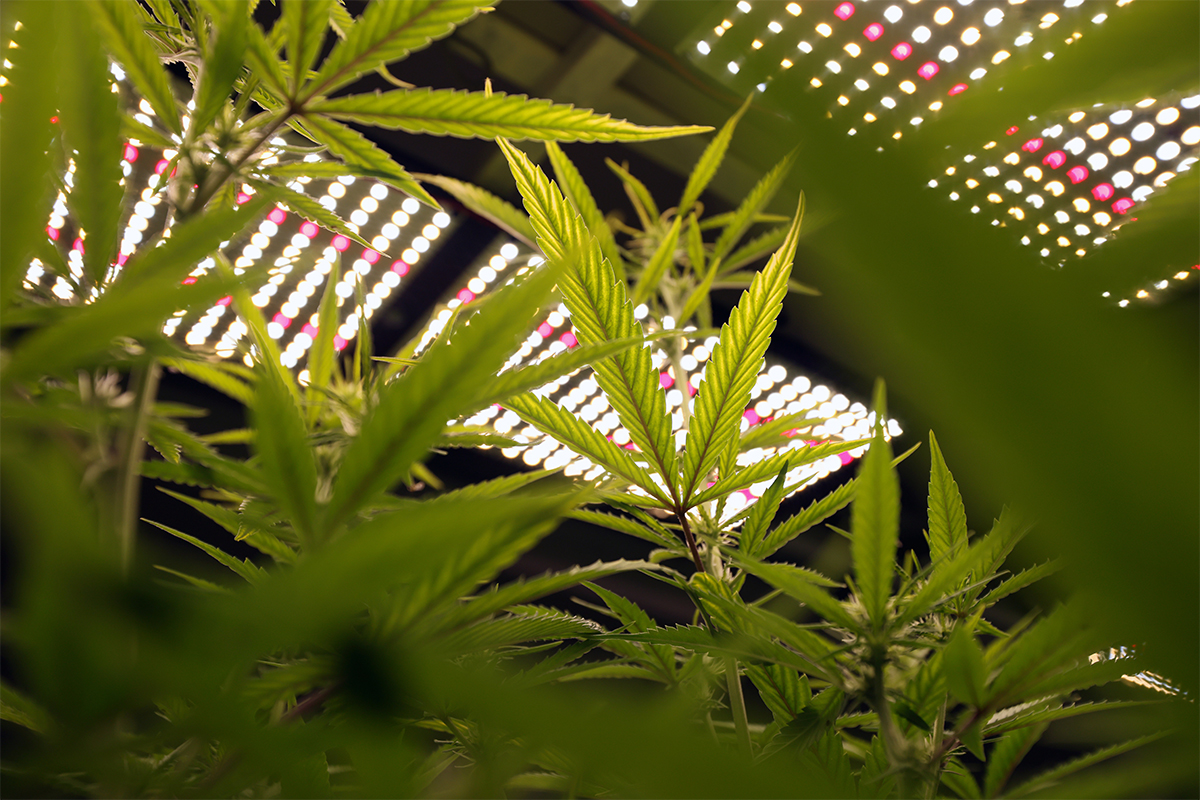
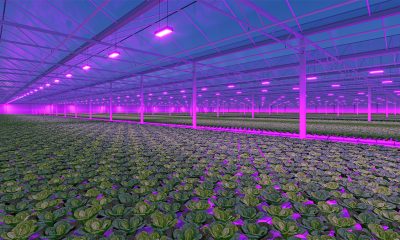
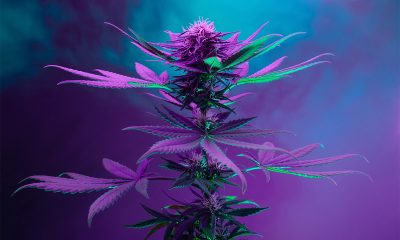
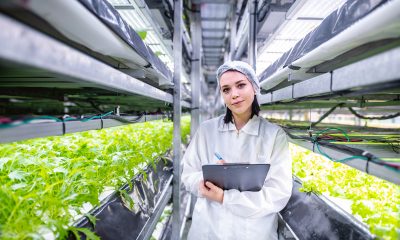
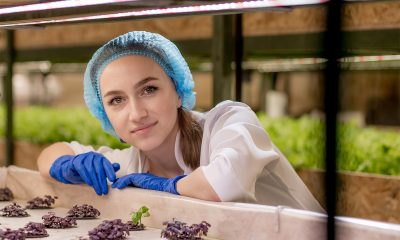
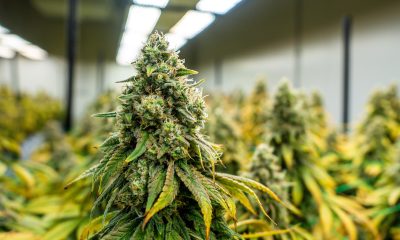
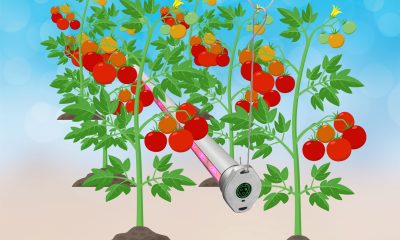
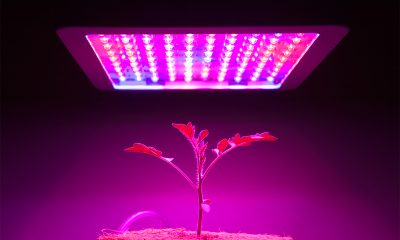

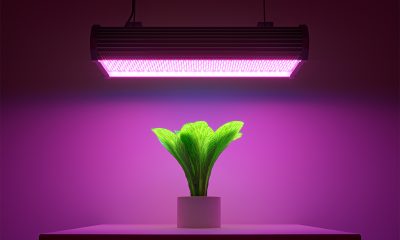





Loading...